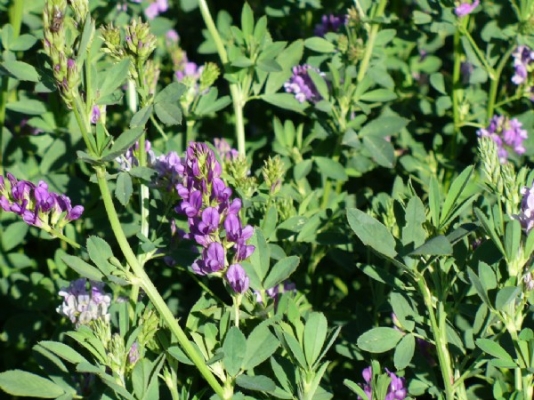General Information
Lucerne also known as "alfalfa" or "rijka" in northern India is a protein rich fodder and considered as "queen of fodder crop". It is a perennial plant and can supply fodder for 3-4year in same growing. Along with protein, it is also major source of mineral and calcium. It is a palatable green fodder contains 16-25% of crude protein and 20-30% of fiber. Lucerne is native of South-West Asia. It is a hardy leguminous crop and can survive in drought conditions. It can be easily converted into silage and hay. It is winter season crop and mainly cultivated in Gujarat, Madhya Pradesh, Maharashtra and Rajasthan.
It is suitable for sowing in high dry mountainous areas. It gives an average of 160-170 quintal/acre of green fodder. The dry matter contains 22% of protein content.











